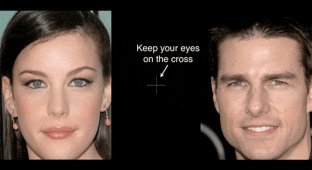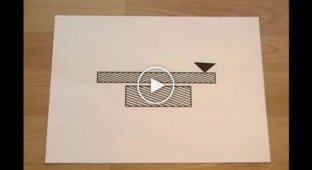Optical illusions are nothing more than an optical illusion of our brain. After all, when we look at a picture, our eye sees one thing, but the brain begins to protest and claim that this is not at all what it is. So it turns out that illusions are created by our mind, which begins to analyze the color, the position of the light source, the location of edges or corners, etc. Thanks to this, the correction of visual images occurs.
Be careful! Some illusions can cause tearing, headaches and disorientation in space.

Invisible chair. The optical effect, which gives the viewer a false impression of the location of the seat, is due to the original design of the chair, invented by the French studio Ibride.

Volumetric Rubik's Cube. The drawing looks so realistic that there is no doubt that this is a real object. Twisting the piece of paper, it becomes obvious that this is just a deliberately distorted image.

This is not an animated gif. This is an ordinary picture, all elements of which are absolutely motionless. It is your perception that is playing with you. Hold your gaze for a few seconds at one point, and the picture will stop moving.

Look at the cross in the center. Peripheral vision turns beautiful faces into monsters.

Flying cube. What looks like a real cube floating in the air is actually a drawing on a stick.

Eye? A shot from photographer Liamm, who was filming a foam sink but soon realized it was an eye staring back at him.

Which direction does the wheel spin?

Hypnosis. Stare without blinking at the middle of the image for 20 seconds, and then move your gaze to someone’s face or just a wall.

Four circles. Be careful! This optical illusion can cause headaches lasting up to two hours.

Ordering squares. The four white lines appear to be moving randomly. But once you put images of squares on them, everything becomes quite natural.

The birth of animation. Animated images by overlaying a grid of black parallel lines on the finished drawing. Before our eyes, static objects begin to move.

Same or different? How can two cigarettes be different and the same size at the same time?

Endless corridor. By covering the floor or walls of the corridor alternately, you can slow down or speed up the movement.

Kaleidoscope. A motion illusion based on the work of Akiyoshi Kitaoka, a professor of psychology at the University (Ritsumeikan) in Tokyo, world famous for his many motion illusions.
























